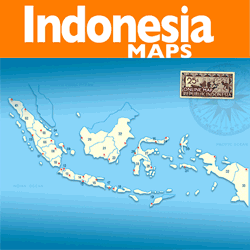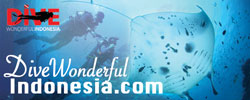Teluk Bintuni Nature Reserve
Teluk Bintuni is a district located in West Papua with about 20,840 km2 area. Although not many people know about the natural beauty of Teluk Bintuni, in fact the potential for natural wealth there cannot be underestimated. This is because Teluk Bintuni holds enormous natural wealth and is still not fully utilized.
For example, Teluk Bintuni has a Nature Reserve which covers 124,850 hectares area, where more than 90 percent of the area is mangrove forest ecosystem. The extent of the mangrove forest is what makes Teluk Bintuni Nature Reserve a role as a buffer for fishing and shrimp activities and industries. In addition, Teluk Bintuni Nature Reserve area is also said to be home to various fauna such as estuarine crocodiles, 39 species of mammals, 17 marsupials and 160 species of birds.
Mangrove forest grows in tidal areas, especially on protected beaches and river mouths, which are inundated at high tide and free from inundation at low tide. The plant community is salt tolerant. The benefits of plants from mangrove forests, include Avicennia Marina (the local name is pai), the leaves are for vegetables and food for honey-producing beetle colonies, potential as raw materials for making laundry soap; Avicennia Gymnorrihiza ( the local name is sarau) the wood is useful for grilled charcoal, the skin adds to the delicious taste of grilled fish; Bruguiera Sexangula (the local name is sarau) the leaves contain alkaloids that can treat skin tumors, the roots are used for incense, the fruit is used as an eyewash; Ceriops Tagal (the local name is parum), is useful as a coloring agent and preservative for fish nets and for the batik industry, its wood for plywood industry and bark for medicine.
The mangrove forest in Teluk Bintuni is even the best mangrove area in the world after Raja Ampat, and 10 percent of the mangrove forest area in Indonesia. This mangrove forest area allows the district to develop fishery commodities, such as shrimp and crabs. The density of mangrove forests along the coast makes Teluk Bintuni famous as a producer of fisheries for export commodities, such as shrimp, mud crab, demersal fish and small pelagics.
The mangrove forest here is allowed to be sustainable because it has many benefits for both nature and the surrounding community. Here are some of the benefits of the Teluk Bintuni Nature Reserve:
As Litter Producer
This wide mangrove forest is one of the best litter-producing places. Litter is one of the important things in the life of mangrove forests in the food circle process. Litter is an organic substance that can be used as a high nutrient in the process of photosynthesis. This mangrove forest produces litter from various things such as leaves, tree branches, and trees that die from succession.
As Preventer of Beach Abrasion
Mangrove forests in this nature reserve are also very useful in terms of preventing coastal abrasion. Mangrove forests have a very important role to prevent ocean waves from directly hitting the coast. Very large waves from the sea will be muffled by mangrove forests so that they have small waves at the coast. You can prove this yourself to this nature reserve area where the coast tends to not experience coastal abrasion.
As Habitat for Important Animals
The mangrove forest in Teluk Bintuni is also a habitat for important animals there. There are so many wild animals that find shelter and a source of food in this forest. This mangrove forest is dominated by various birds such as the Yellow-crested parrot, eagle, and also sea pigeon. Not only birds, many reptiles also live in the area, include estuarine crocodiles, mangroves lizards, and mangroves snakes.
This area also turns out to be the main destination for migrating animals. According to local residents, there are several animals that come here such as Pelicans, Umikia Raja birds, and others from April to May. Their arrival indicates that this forest is still very important and is a place to find good food.
As a Spawning Area, Foraging Area, and Breeding Area for Various Aquatic Animals
The Mangrove forest area in Teluk Bintuni also a place for spawning, foraging for food, and a nursery place for aquatic biota. This area is a safe place to live for several animals such as fish, shrimp, snails, shellfish, and other aquatic animals. These aquatic animals can be found in various sizes, from small to large. These aquatic animals are often found in the canals or in the roots of mangrove trees of the Rhizophora sp.
So, those are some of the functions of Teluk Bintuni Nature Reserve which is filled with mangrove forests. The view of the mangrove forest is very beautiful and looks very natural. When you come here, don't forget to keep the beauty and cleanliness of nature.
How to get there?
You can reach Teluk Bintuni Nature Reserve area from the provincial capitals of West Papua (Manokwari) and Sorong. It can be reached by Twin-Otter aircraft to Bintuni (the capital of Teluk Bintuni Regency) for about 45 minutes and a four-wheeled vehicle (Toyota Hard-top) from Manokwari with about 10-12 hours travel time. Furthermore, from the Bintuni downtown, the CATB (Teluk Bintuni Nature Reserve) area can be accessed in two ways: by four-wheeled and two-wheeled vehicles to the northern boundary of the area with about 10-5 minutes; or by a motor boat (longboat) along the Steenkol/Wasian river to the western boundary of the area with about 30-45 minutes travel time.










